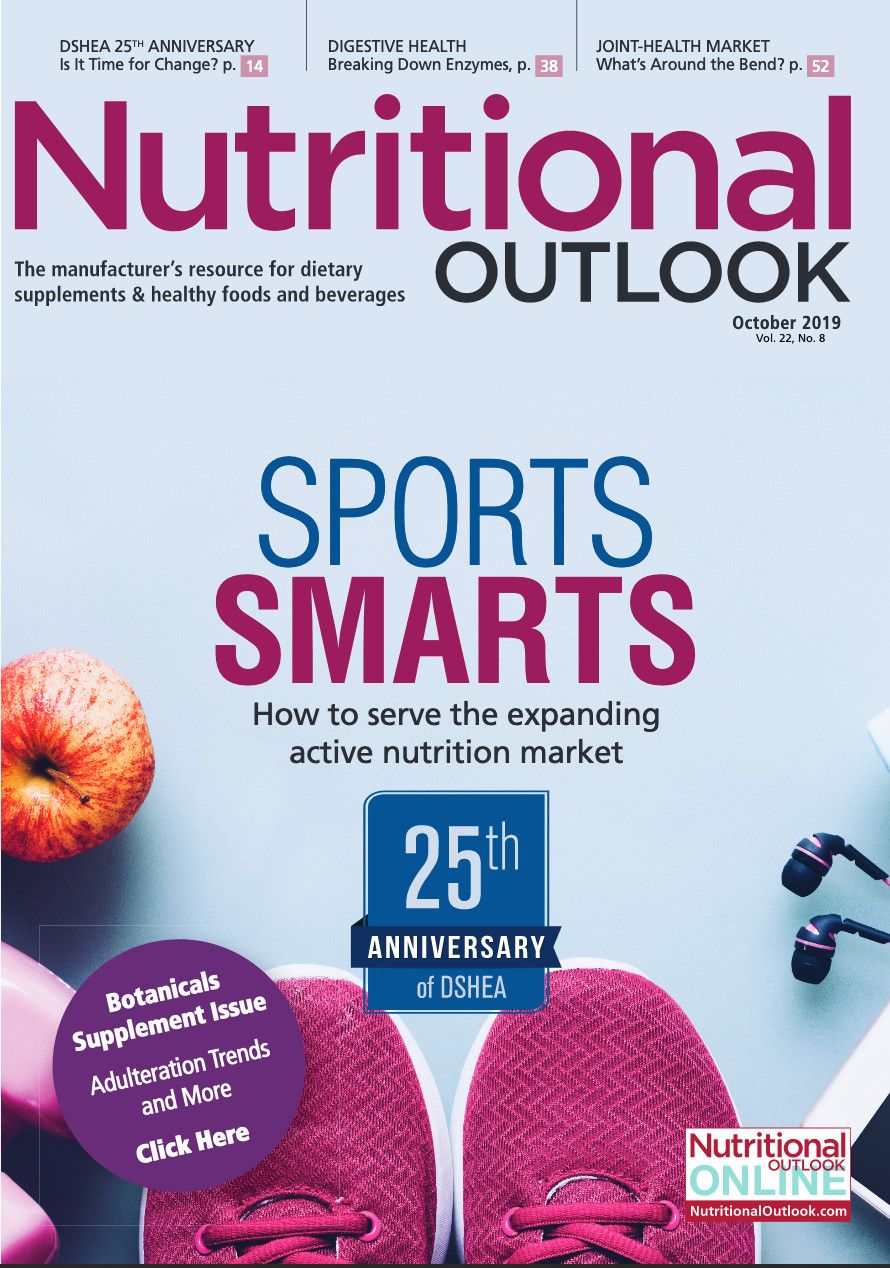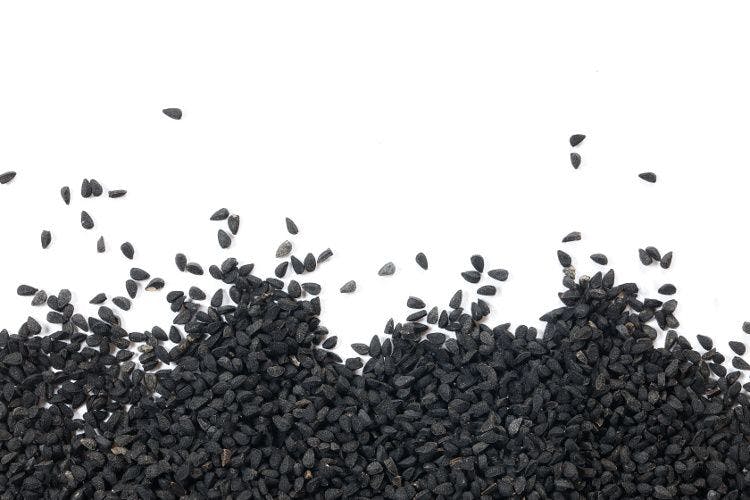Good sports: Sports nutrition’s moving target
Sports nutrition products are expanding upon the benefits they deliver, the means by which they deliver them, and the consumers whom they target.

Is yoga a sport? Emily Avery, USA Yoga’s women’s gold-medal champion in the 18-49 age group for three years running, would probably say so. And like her, millions of participants in “sports” such as CrossFit, Spartan Races, and Tough Mudders are redefining what it means to be an athlete, and democratizing the notion of sport in the process.
Sports nutrition products are undergoing their own redefinition in response, expanding upon the benefits they deliver, the means by which they deliver them, and the consumers whom they target. While this is forcing formulators out of their comfort zones-you’ll need more than a keg of protein powder to capture today’s sports nutrition consumer-it also heralds a refreshing dynamism for the category.
No wonder, says Josh Beaty, marketing director, NuLiv Science USA Inc. (Brea, CA), that “today’s sports nutrition is for the athlete in everyone.”
From Fringe to Front Row
The complexion of the current sports nutrition market is a far sight from what Chase Hagerman, brand director, Chemi Nutra (Austin, TX), knew just a few decades ago.
“Back in the 1990s, I remember there was a small sampling of own-label distributors essentially born of bodybuilders on a mission to optimize their performance, mostly for self-satisfaction,” he recalls. By the mid-2000s as the category’s profile was rising, the critical mass started shifting to athletes looking to boost their competitive edge. “And by a decade later to today,” Hagerman continues, “sports nutrition has been becoming even more mainstream.”
How much more? Depending on whom you ask, sports nutrition products represent up to 25% of current retail sales in specialty and online dietary supplement purchases, according to Mark A. LeDoux, CEO and chairman, Natural Alternatives International (San Marcos, CA).
In fact, Grand View Research predicts a global value for sports nutrition of $24.43 billion by 2025, driven, in part, by the category’s embrace of recreational exercisers in addition to its traditional core of bodybuilders and serious athletes.1
That growth tracks with heightened public awareness of health and wellness, not to mention the proliferation of high- and low-intensity gyms, “boxes,” exercise studios, and classes.
And don’t discount the role of wearables. Notes Juliana Erickson, senior marketing manager, Lonza Consumer Health & Nutrition (Morristown, NJ), “The rise of digital fitness and wearable technologies that allow users to track their fitness progress is also fueling interest in nutritional products to aid performance and recovery.”
Indeed, says Hagerman, “For the first time since 2012, Apple reported in their quarterly earnings in June that the iPhone represented less than 50% of Apple’s revenue-reporting, conversely, 50% growth in their wearables category.”2
Fueling a Broader Base
As weekend warriors don their smart watches and start living the link between nutrition, wellness, and exercise, “they want in on these sports-nutrition products, too,” says Stephanie Lynch, vice president of sales, marketing, and technology, IDF (Springfield, MO).
That’s prompting brands to formulate to a wider variety of nutritional needs. “Some companies have even discussed a potentially better name for the industry to appeal to this broader new consumer base: ‘lifestyle’ or ‘active’ nutrition,” notes Beaty.
According to Mariko Hill, product development executive, Gencor (Irvine, CA), sports nutrition consumers in general want to “reduce the impact of aging and exercise.” Performance-driven users thus look for foods and supplements that build muscle, improve endurance, and boost energy, while those with a more holistic approach-“yogis and weekend warriors,” she says-prioritize immunity, general wellbeing, and recovery.
“In the past, sports nutrition products were targeted at performance-oriented, young, healthy males: bigger, faster, stronger,” says Larry Kolb, president of TSI USA Inc. (Missoula, MT). “Today, the consumers of sports nutrition products include women, elderly consumers trying to age gracefully, and the weekend warriors: people seeking an active lifestyle-not always to the level of an athlete-however, very committed and enthusiastic about their sport nonetheless. While performance is still driving sales of sports nutrition products, recovery and energy are major driving forces for this far broadened, everyday active lifestyle group.”
In fact, recovery has appeal across the fitness spectrum. Notes Andrew Wheeler, vice president, marketing, FutureCeuticals (Momence, IL), “The old ‘no pain, no gain’ mantra is being replaced by thoughtful training that can reduce the risk of injury. Sports nutrition consumers want products that echo that approach with claims for hydration, reducing muscle and joint soreness, and improving performance.”
But as far as Hagerman is concerned, “Brands don’t emphasize vanity with sports supplements as much as they should.” Most consumers aren’t after Olympic gold, he wagers. “The vast majority are mostly just recreationally active.” Their goal is what he calls the “trifecta of fitness”: more muscle, more strength, less fat mass. “All other functions feed into this. At the end of the day, the average consumer’s biggest competition is themselves.”
Understanding the Weekend Warrior
To reach that average consumer, Beaty suggests that brands innovate “in both formulation and marketing, giving consumers a reason to try something new or that they’ve never heard of before.”
Doing so requires understanding the weekend warrior, and Emily Pankow Fritz, PhD, technical service manager for active wellness, Kemin Foods (Des Moines), considers this new breed “an interesting target” for a few reasons.
Metabolically, they differ from serious athletes in that they don’t exercise intensely or consistently enough to experience the same adaptations that serious competitors do-so their energy and recovery needs will differ from those of serious competitors, as well.
Commercially, she says, “Weekend warriors might be less inclined to shop for traditional sports nutrition products positioned toward athletes.” As lifestyle users, she says, “they provide an opportunity for sports nutrition brands to branch out into a wider range of supplements and products that support overall health and wellness.”
Easy Does It
Which is what smart brands are doing. As Beaty says, “It’s no longer just a space for protein and pre- and post-workout products.”
Granted, “Protein shakes simply taste better than they used to,” claims Christopher Naese, vice president, business development, Florida Food Products (Eustis, FL). “But there’s also more variety and more ways to tailor nutrition to personal needs.”
One such need is convenience, which formats like gummies, chews, gels, effervescent tablets, and single-serving stick packs and sachets provide. As Wheeler says, “These have the convenience factor, with portability enabling ease of consumption.”
Vincent Tricarico, vice president, contract manufacturing, NutraScience Labs (Boca Raton, FL), adds that brands can win by developing packaging options that fit users’ lifestyles. “So if a brand recognizes through research that most of its customers are on the go, it makes sense to package their powder in a stick pack versus a traditional tub with a scoop,” he says.
Powder Power
But even conveniently packaged sports powders face competition from their ready-to-drink (RTD) counterparts. As Hagerman says, “It’s been proven that convenience has a ton of merit, and it doesn’t get more convenient than ready-to-drink beverages.”
Still, insists Wheeler, “A great-tasting powder remains the best dose form for sports nutrition.”
Hagerman agrees. “The vast majority of sports nutrition customers we work with are making powdered drink mixes,” he says. The bulk jugs are economical, lightweight, and easy to ship-crucial in a largely online marketplace. Powders are also cheaper to produce, making for a lower price point. And they deliver more actives per serving, Hagerman adds, “which is vital because many staple sports nutrition ingredients are dosed in gram increments.”
Snack Attack
Where convenience really hits sports nutrition is in the snack aisle. Observes Beaty, “A number of brands are innovating through the creation of not just new protein powders, but healthy snack and dessert options, like pizza crusts and cookies.” Why? “Their healthy-snacking appeal means more impulse purchases from a wider demographic than traditional supplements.”
Pointing to a Mintel finding that 94% of U.S. adults snack daily, Lynch bets that the “next big thing” will be protein crisps and other sports-snack formats. “As snacks continue to become ingrained into the American diet,” she says, “the market is ripe for nutritive snack innovations.”
But sports-nutrition supplements-read: tablets and capsules-retain a loyal following for their convenience, versatility, and easy-to-swallow format, Erickson says. “Capsules suit a range of ingredients,” she says, “and with the latest technology can address more than one health benefit in a single capsule-from sports nutrition and energy to bone and joint health.”
Go-to Ingredients
Sports nutrition brands are addressing those benefits with a number of functional ingredients-some familiar, some less so.
“Acetyl-L-carnitine, alpha-lipoic acid, cassia cinnamon, chromium picolinate, citrulline, creatine, glucosamine, glutamine, isoleucine, leucine, valine, arginine, glutathione precursors, and others all have sound data showing they enhance cellular repair when used with naturally sourced antioxidants and healthy foods,” says LeDoux.
Protein remains a top draw, too. “Consumers associate protein with muscle growth, strength, and a healthy diet overall,” Wheeler says. “Traditional protein powders, like whey, comply with keto and low-carb diets while plant-based sources-pea, soy, and hemp, for example-attract flexitarian and vegan consumers newer to the sports nutrition space.”
Erickson points to studies demonstrating L-carnitine’s role in sports nutrition. “Its main metabolic function,” she explains, “is to transport long-chain fatty acids into the mitochondrial matrix for beta oxidation and energy generation-so it’s necessary for the use of fatty acids as energy, which is important in exercise and sports because fatty acids are the main fuel for endurance athletes.” Further studies show L-carnitine may enhance recovery, too, by increasing blood flow, attenuating metabolic stress markers, decreasing muscle soreness, improving recovery time, and “reducing hypoxic effects generated during exercise,” she adds.3
Erickson is also bullish on marine ingredients. A unpublished pilot study found that a 25-g dose of Lonza’s marine phytoplankton product Oceanix (Tetraselmis chuii) significantly boosted several biomarkers of exercise performance and recovery compared to baseline and control in 32 student athletes. Researchers noted high concentrations in the treatment population of superoxide dismutase, an antioxidant enzyme that protects against oxidative stress during activity, suggesting that the supplement may not only optimize physical performance, but may promote faster recovery, too, she says.
Hagerman notes that phosphatidic acid (PA), in conjunction with sufficient dietary protein and mechanical stress on muscle, significantly activates the mammalian target of rapamycin (mTOR) signaling pathway, which regulates muscle protein synthesis (MPS). Studies involving his company’s branded Mediator PA ingredient also show a loss in fat mass, as “one of PA’s roles is to turn on fat metabolism and manage fat transport,” he notes.
Future of Fitness Fueling
But while most sports nutrition research to date has focused on physical performance, the effect of nutrition on cognitive “athletics” is just beginning to attract attention.
“The rise of gaming, or esports, places huge demands on the body, as players need sustained energy and mental clarity to stay focused for several hours of continuous play at a time,” Erickson points out. “While it may not be a typical sport, this challenges manufacturers to create nutritional solutions that allow longer, modified release for sustained energy and focus.”
Chemi Nutra’s SerinAid phosphatidylserine (PS) and AlphaSize alpha-glyceryl phosphoryl choline (alpha-GPC) enjoy an established reputation for enhancing cognitive performance as well as athletic, Hagerman says. “Alpha-GPC is a well-regarded ‘mind-to-muscle’ ingredient due to its involvement in motor-unit activation of muscle fibers and subsequent muscle contraction, as well as its mental-sharpness benefits,” he adds.
Pankow Fritz notes that Kemin is exploring the benefits of its spearmint extract Neumentix and its FloraGLO lutein for esports athletes. Studies on the former, a natural nootropic, show improvement in choice reaction performance and sustained attention, she says, while the latter helps filter blue light, “a common exposure in this population.”
But what really has Pankow Fritz excited is the promise of personalization, which she predicts “will take on a whole new meaning in the context of exercise and sports nutrition,” she says. “The application of personalization is appearing in simple concepts like macronutrient recommendations and more complex ideas like hydration suggestions based on sweat rate, or supplementation with actives like caffeine and beta-alanine based on responsiveness and activity levels.”
While such opportunities are still in the vision stage, “companies are starting to find creative ways to personalize products and recommendations to account for training status,” she says. In the future, she wouldn’t even be surprised if the trend roped in nutrigenomics to assess the relationship between athletes’ genes and their responses to specific actives. And that’s a prospect anyone could be a good sport about.
References:
- Grand View Research. “Sports Nutrition Market Size Worth $24.43 Billion by 2025 | CAGR: 9.7%” December 2018. Accessed at: www.grandviewresearch.com/press-release/global-sports-nutrition-market
- Leswing K. “Apple Rises on Earnings Beat.” CNBC. July 30, 2019. Accessed at: www.cnbc.com/2019/07/30/apple-earnings-q3-2019.html
- Fielding R et al. “L-carnitine supplementation in recovery after exercise.” Nutrients, vol. 10, no. 3 (March 13, 2018): 349

Prinova acquires Aplinova to further increase its footprint in Latin America
April 7th 2025Prinova has recently announced the acquisition of Brazilian ingredients distributor Aplinova, which is a provider of specialty ingredients for a range of market segments that include food, beverage, supplements, and personal care.























